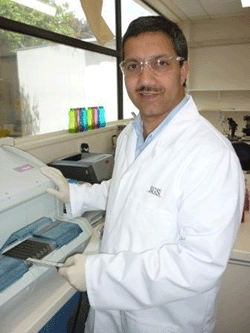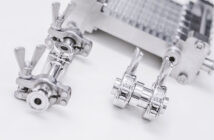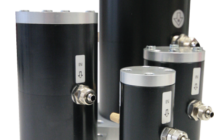SGS NZ has been searching for technologies to help food industry manufacturers, especially those in the FMCG markets, to release products earlier with confidence – while keeping costs minimal.
After rigorous validations and evaluations, SGS NZ says it now has the confidence to introduce to the New Zealand food market the highly specific and sensitive VIDAS® technology.
VIDAS uses the enzyme-linked fluorescent assay technology which the company says has been tried and tested worldwide as a leading automated pathogens testing platform.
Over the past year SGS has evaluated this procedure for a wide range of foods and plant hygiene monitoring surfaces for salmonella and listeria monocytogenes/species and had it accredited by IANZ.
The recent US cantaloupe related listeria outbreak, which resulted in 29 deaths and a further 139 cases of infection across 28 American states, and the Spanish-egg related salmonellosis in the UK which affected 262 people, to the need for intensive testing of product for these pathogens before release to the market, SGS says.
Manufacturers however, are under constant pressure to get their finished products to the market quickly, while keeping inventory levels lean.
There is a huge cost to storing the finished product in the warehouse or cold store until clear laboratory results for these pathogens are received.
Due to the high mortality rates associated with listeriosis and salmonellosis, food safety regulations in New Zealand mandate that all ready-to-eat products should be free of salmonella and listeria monocytogenes.
Traditional laboratory culture methods may require between six to 10 days to deliver results and manufacturers may resort to the “ship and pray” approach, which could result in expensive recalls or shortened available shelf life.
Both pathogens are routinely implicated in food poisoning cases from meat, poultry, seafood, processed dairy (including infant formula), delicatessen
products, bread and pastry mixes, fruits and vegetables, animal feeds, herbs and spices and are also commonly detected on manufacturing surfaces.
The new VIDAS technology, exclusive to SGS NZ, offers a significant advantage over traditional culture-based microbiological testing, SGA says.
VIDAS technology for salmonella shows the absence of salmonella within 24 hours and listeria LDUO will provide results for listeria monocytogenes/species within 48 hours.
“MAF Food Safety Authority has a zero tolerance to presence of listeria monocytogenes and salmonella in ready-to-eat foods,” says SGS technical and quality manager Dr Guru Parkar.
“The VIDAS technology was carefully selected, verified and accredited at the SGS NZ lab in response to the constant demand from compliance and quality managers of the food Industry for a rapid yet reliable method that satisfied MAF compliance criteria,’’ he says.
Mr Parkar says that cost was a major consideration as they searched for technologies that would help customers release products to market sooner.
“We didn’t want to be burdening these businesses with a substantial increase in testing costs. VIDAS technology is in keeping with the NZFSA listeria monocytogenes risk management strategy to focus on controls that are practical, feasible and cost effective,” he says.
“Food manufacturers can be confident of results generated by the rapid VIDAS technology both for salmonella and listeria monocytogenes/species while releasing their products to the markets earlier than ever before,” says Mr Parkar.
“During these difficult economic times food manufacturers can take solace in the fact that this advanced technology can vastly reduce storage costs and increase available shelf life for the product.
“In short, food manufacturers can optimise their production and hygiene monitoring, accelerate corrective actions and avoid the risk of costly product recalls,” he says.





























































































